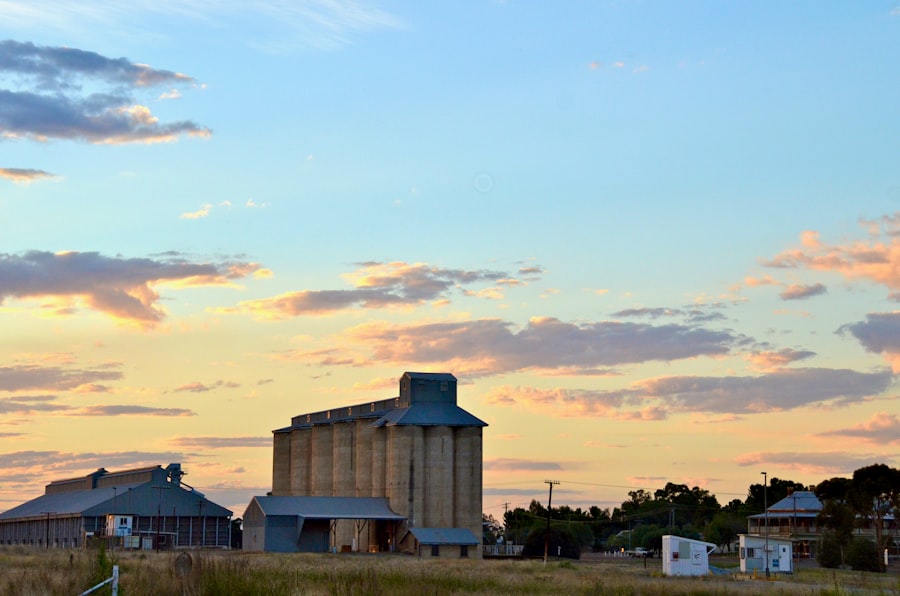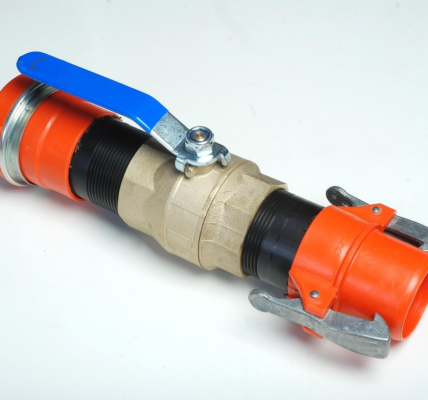Grain silos serve as essential structures in the agricultural landscape, providing a multitude of benefits that extend beyond mere storage. One of the primary advantages of utilizing a grain silo is the preservation of grain quality. By creating a controlled environment, silos protect stored grains from moisture, pests, and temperature fluctuations, which can lead to spoilage.
This preservation is crucial for farmers and grain producers, as it ensures that their harvest remains viable for longer periods, allowing them to sell their products at optimal prices. For instance, a farmer who stores corn in a well-maintained silo can keep it fresh for months, reducing the risk of loss due to spoilage. Moreover, grain silos contribute to operational efficiency.
By centralizing grain storage, farmers can streamline their harvesting and distribution processes. Instead of transporting grain to various locations for storage, a single silo can accommodate large quantities, minimizing transportation costs and labor. This efficiency is particularly beneficial during peak harvest seasons when time is of the essence.
Additionally, modern silos often come equipped with advanced technology that allows for real-time monitoring of grain conditions, enabling farmers to make informed decisions about when to sell or process their crops.
Factors to Consider When Choosing a Grain Silo
Selecting the right grain silo involves careful consideration of several factors that can significantly impact its effectiveness and longevity.
Assessing Capacity Needs
One of the foremost considerations is the capacity of the silo. Farmers must assess their production levels and storage needs to determine the appropriate size. A silo that is too small may lead to overcrowding and increased risk of spoilage, while an excessively large silo could result in unnecessary expenses. For example, a farmer with a consistent yield of 10,000 bushels of wheat should choose a silo that can comfortably accommodate this amount while allowing for some additional space for future growth.
Material Considerations
Another critical factor is the material from which the silo is constructed. Grain silos are typically made from steel, concrete, or fiberglass, each offering distinct advantages and disadvantages. Steel silos are known for their durability and resistance to corrosion but may require additional insulation to protect against temperature fluctuations. Concrete silos, on the other hand, provide excellent thermal mass and can be more cost-effective for larger operations.
Evaluating Materials in Relation to Local Conditions
Fiberglass silos are lightweight and resistant to rust but may not be suitable for all types of grain. Evaluating these materials in relation to local climate conditions and specific storage needs is essential for making an informed decision.
Types of Grain Silos Available in Texas

In Texas, a diverse range of grain silos is available to meet the varying needs of farmers across the state. One common type is the upright silo, which is typically cylindrical and constructed from materials such as steel or concrete. These silos are designed for high-capacity storage and are often used for bulk grains like corn and wheat.
Their vertical design allows for efficient use of space, making them ideal for farms with limited land area. Another popular option is the flat-bottom silo, which features a wide base and is often used for storing larger quantities of grain. These silos are particularly advantageous for operations that require easy access to the stored grain for loading and unloading.
Additionally, there are also hopper-bottom silos designed with a conical base that facilitates easy grain flow during unloading. This design minimizes the risk of grain bridging or clogging, ensuring smooth operation during harvest and distribution. In recent years, there has been a growing interest in portable silos, which offer flexibility for farmers who may need to relocate their storage solutions based on changing crop yields or market demands.
These silos can be easily transported and set up in different locations, providing a versatile option for those who operate across multiple sites.
How to Properly Maintain a Grain Silo
| Task | Frequency | Responsible |
|---|---|---|
| Cleaning | Monthly | Operations team |
| Inspection | Quarterly | Maintenance team |
| Repairs | As needed | Maintenance team |
| Pest control | Bi-annually | Operations team |
Proper maintenance of a grain silo is crucial to ensure its longevity and effectiveness in preserving grain quality. Regular inspections should be conducted to identify any signs of wear or damage. This includes checking for rust on metal silos, cracks in concrete structures, or any signs of pest infestation.
Addressing these issues promptly can prevent more significant problems down the line. For instance, if rust is detected on a steel silo, it should be treated immediately to prevent corrosion from compromising the structure’s integrity. Cleaning is another vital aspect of silo maintenance.
Residue from previous grain batches can lead to contamination and spoilage if not properly addressed. Farmers should establish a routine cleaning schedule that includes removing any leftover grain and thoroughly cleaning the interior surfaces of the silo. This process not only helps maintain grain quality but also reduces the risk of pests and mold growth.
Additionally, ensuring that ventilation systems are functioning correctly is essential for maintaining optimal conditions within the silo.
Finding the Perfect Location for Your Grain Silo
The location of a grain silo plays a pivotal role in its overall effectiveness and accessibility. When selecting a site, farmers should consider proximity to fields where crops are harvested. A location that minimizes transportation distance between the field and the silo can significantly reduce labor costs and time spent moving grain.
For example, placing a silo near a cornfield allows for quick transfer from harvesters directly into storage, preserving freshness and reducing handling time. Furthermore, environmental factors must also be taken into account when determining the ideal location for a grain silo. Areas prone to flooding or excessive moisture should be avoided to prevent water damage to stored grains.
Elevating the silo on a slight incline can help mitigate potential water accumulation around its base. Additionally, considering wind patterns is essential; placing the silo in an area shielded from strong winds can help protect it from structural damage over time. Accessibility is another critical consideration; ensuring that trucks and machinery can easily reach the silo for loading and unloading operations will enhance efficiency.
A well-planned access route can facilitate smooth operations during peak harvest times when quick turnaround is essential.
Tips for Purchasing a Grain Silo in Texas

Research and Due Diligence
Conducting thorough research on various manufacturers and suppliers is essential when purchasing a grain silo in Texas. Look for companies with a solid reputation in the industry and positive customer reviews. Engaging with local agricultural extension offices or farmer cooperatives can provide valuable insights into reliable suppliers in your area.
Assessing Your Needs
It’s crucial to assess your specific needs before making a purchase. Consider factors such as your expected grain yield, types of crops you will store, and available budget. Creating a detailed list of requirements will help narrow down options and facilitate discussions with suppliers about suitable models that meet your criteria.
Warranties, Maintenance, and Support
Inquire about warranties and after-sales support when purchasing a silo. A reputable manufacturer should offer warranties that cover structural integrity and any potential defects in materials or workmanship. Understanding what kind of maintenance support or service agreements are available can provide peace of mind as you invest in this critical piece of agricultural infrastructure. Additionally, consider visiting existing installations or speaking with other farmers who have purchased similar silos to gain valuable insights into performance, maintenance challenges, and overall satisfaction with their investment.
By gathering information from multiple sources and carefully evaluating your options, you can make an informed decision that aligns with your agricultural goals in Texas.




